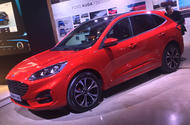Total redesign of Ford’s SUV for 2020 adds more space, more tech, a Focus-inspired look and cleaner engine options
The Ford Kuga has been redesigned from the ground up in a bid to attract more buyers in the still-booming family SUV sector, and the new model will be offered with plug-in hybrid and mild-hybrid powertrains, along with conventional petrol and diesel offerings.
As the firm ramps up its European business restructuring SUVs such as the Kuga will play a crucial role. “1 in 3 sales across Europe are SUVs, and for us it’s 1 in 5 – we want to change that.” Jorg Beyer, managing director of product development, told Autocar.
The hybrid line-up in particular is expected to be key to attracting new customers, with interest in electrified powertrains escalating exponentially. The new Kuga won’t go on sale in the UK until early next year, but Ford should still beat many of its rivals to market with its plug-in option, which mates a 2.5-litre petrol engine with an electric motor and 10.3kWh battery pack to deliver 222bhp. The model can travel up to 34 miles on electric range alone, giving it an official economy figure of 235.4mpg, with CO2 emissions of 29g/km.
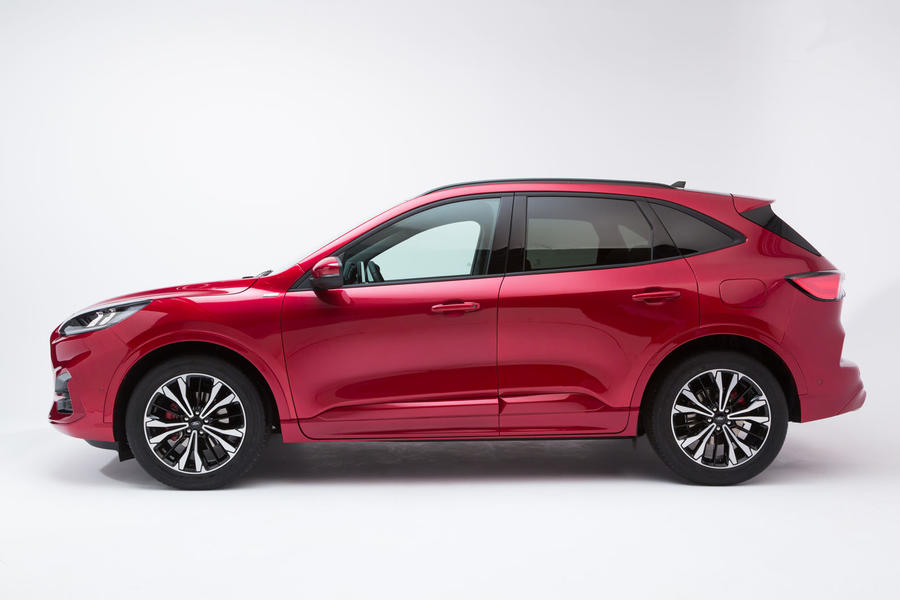
Buyers will also be able to choose a self-charging hybrid set-up, akin to the Prius’s hybrid system, which links the 2.5-litre petrol engine to an electric motor and smaller battery to deliver 50.4mpg and 130g/km. A 48V mild-hybrid set-up is mated to a 148bhp 2.0-litre diesel option to offer 56.5mpg and 132g/km. Conventional 1.5-litre petrol and 2.0-litre diesel variants will also be available, mated to either a six-speed manual or eight-speed automatic gearbox. Two and all-wheel drive options will be available.
Also striking is the new, more sophisticated and less boxy look of the third-generation Nissan Qashqai, Kia Sportage and Hyundai Tucson rival. The styling moves Ford’s design language another step on from the more contoured lines of the latest Fiesta and Focus. The interior also follows those cars, delivering an uncluttered, sweeping look despite the raft of technological functions that are offered, the majority of which are controlled through the central touchscreen.
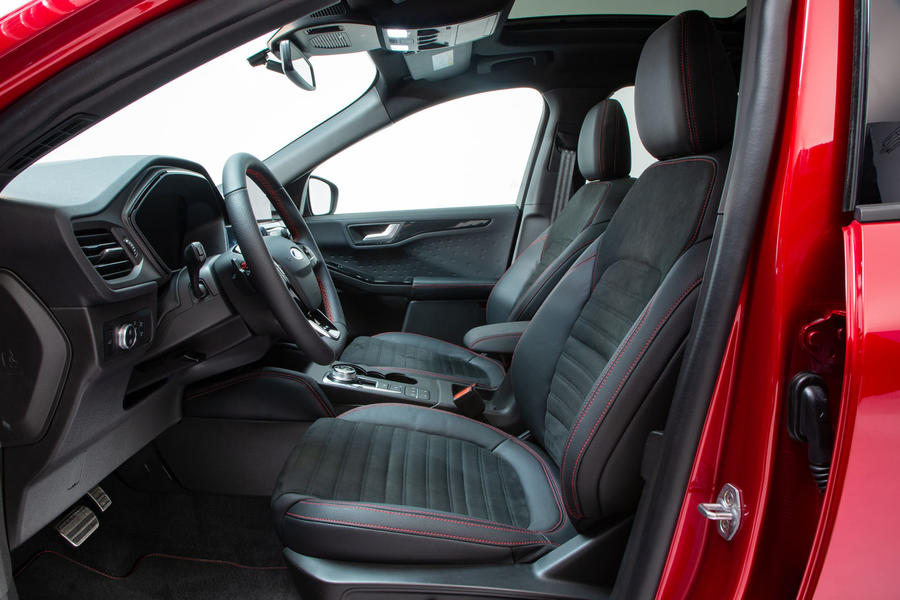
The Kuga sits on the same C2 platform as the new Focus, being longer, wider and having a larger wheelbase – and therefore improved stability and dynamics – than the car it replaces. The platform is also said to be 10% torsionally stiffer than the outgoing car’s, as well as supporting the basis for a more aerodynamic design and allowing weight savings of up to 90kg over today’s model.
In particular, the new Kuga is said to deliver more interior room than before, including what Ford says is class-leading space for rear-seat passengers thnks to an 89mm length increase. In the front, occupants get 43mm more shoulder room and 57mm more hip room than in the current model, while in the rear there is a 20mm increase in shoulder room and 36mm more hip room, while the seats, split 70:30, slide fore and aft as standard.
This increased rear accommodation has been achieved in part by setting the dashboard closer to the engine bay bulkhead and positioned more upright than before, allowing front seat passengers to be seated farther forward.
Despite sporting a dramatic, sloping roofline and an overall height that is lower by 20mm than that of the outgoing car, the new Kuga also offers 13mm more head room in the front and 35mm in the rear, thanks to clever interior packaging.
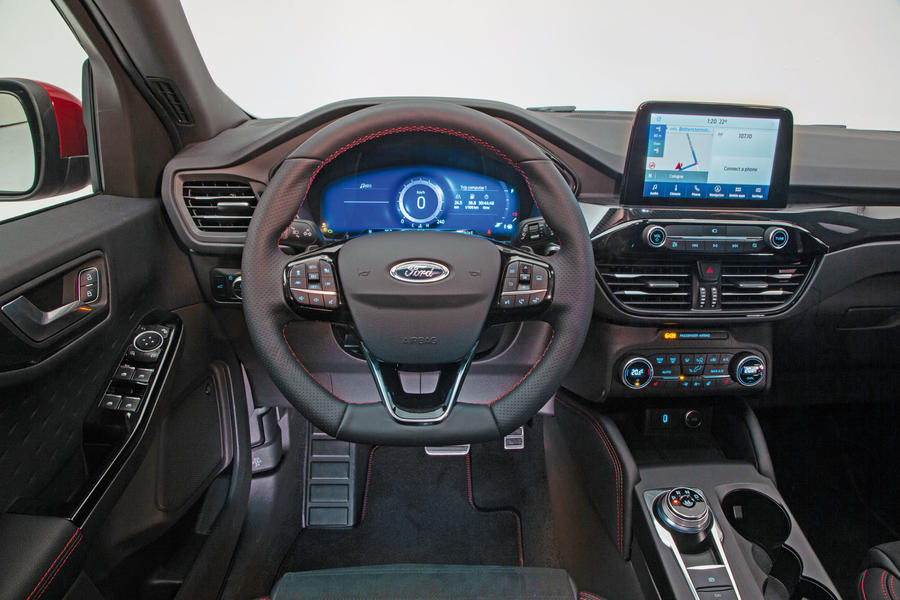
New technology for the Kuga includes FordPass Connect, which can provide wi-fi connectivity for up to 10 devices, a head-up display, wireless charging for a phone, a system that automatically brakes the car if it drives forwards or backwards into crossing traffic and a self-parking system that can parallel park or drive into a space perpendicular to the car at the push of a button. A hands-free boot-opening system, which is operated by waving your foot under the rear bumper, is also available.
A radar and camera-guided system that detects slower-moving and stationary vehicles, and which will automatically steer around them to avoid a collision if necessary, is also available, as are lane-keeping assistance, wide-angle cameras to aid front and rear visibility and Wrong Way Alert, which combines camera-based sensors and satnav technology to warn if the car is being driven the wrong way down a road.
Prices are expected to start from around £24,000, which is more than the outgoing Kuga, but by less than £1000 despite a significant uplift in standard equipment.
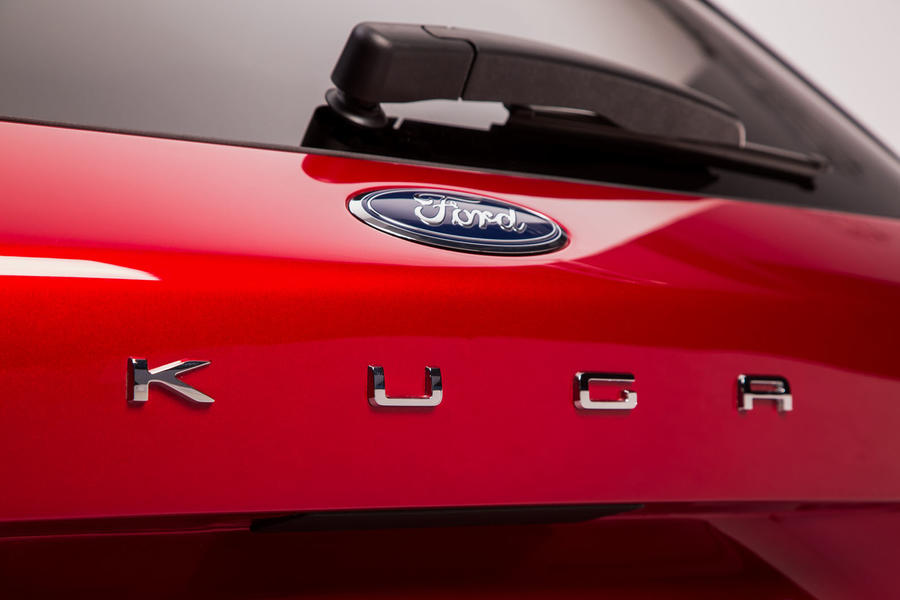
Prices for the hybrid models are yet to be revealed. UK buyers will have four trim levels to choose from: entry-level Trend, high-end Titanium, sportily styled ST-Line and the luxury-focused Vignale.
Q&A with George Saridakis, Ford exterior and design chief
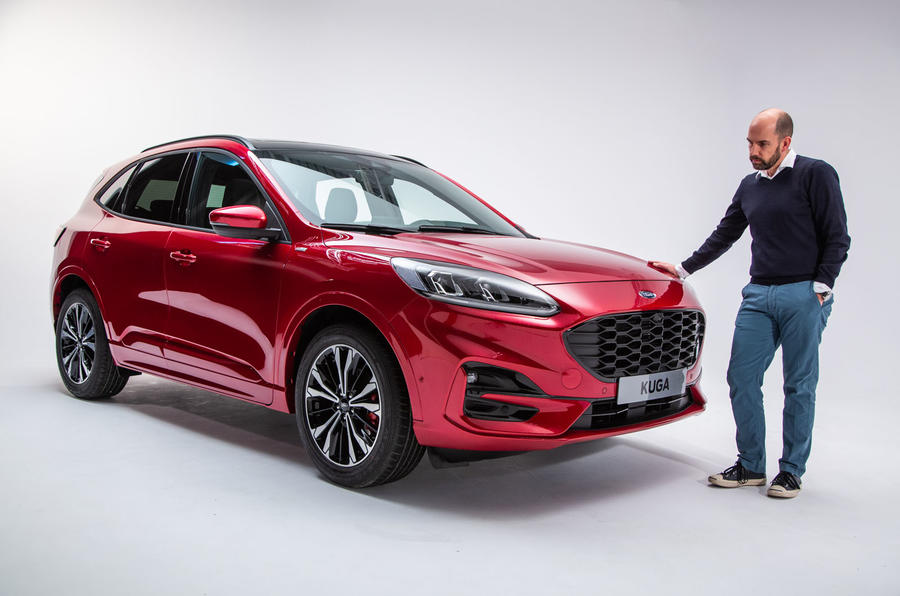
Where do you start with a total redesign such as this?
“It started three years ago, led by the US design studio. We came in 18 months later, with a focus on the ST-Line and Vignale models. There are challenges to designing a global car; different markets often want different things. We ask potential customers what they want early on. There were clear themes: they wanted a larger, more practical car that allowed them to stand out. If they just wanted space they’d buy a van.”
The exterior design is quite a departure from what’s gone before.
“It is more flowing and more sensual, we believe. It’s not noisy or polarising; there’s a sophistication to it that we started using on the Fiesta and then Focus, and which we have dialled up again here. Although it’s tagged an SUV, there’s a growing sense that people buying these cars are not after a utility vehicle – they want something that looks desirable.”
The interior is also markedly less cluttered than in previous-generation Fords.
“There’s a science to it – you can measure where people’s eyes go when they climb in a car and then ascertain if they are drawn to something because it is a distraction or because they like it. “In this case the designer’s adage that less is more holds true. We’ve not just put everything in the touchscreen, either: we recognise that buttons can do some jobs much more intuitively.”
You’ve styled an ST-Line car – is a full ST model a possibility in future?
“It could conceivably be done, but there are no plans. Performance SUVs aren’t uncommon now, so if I was asked to do it then there’s a very clear direction from other ST models that we could follow.”
Read more
Ford to electrify European range
Ford Mach 1: Mustang-inspired EV teased in new image
Source: Autocar
